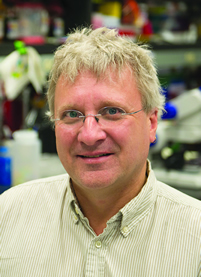There’s a new model in town for osteoarthritis — several new models.
OA is not a normal part of aging, but a very specific pathogenic process. More likely, a specific set of pathogenic processes. Growing evidence suggest that OA is a mix of subtypes that can only be distinguished at the molecular level.

“Osteoarthritis is by far the most common form of arthritis and has gotten much less attention than many of the other more obviously inflammatory forms,” said Frank Beier, PhD, Canada Research Chair in Musculoskeletal Research and Professor of Physiology and Pharmacology at the Western Bone and Joint Institute, University of Western Ontario, Canada. “Fortunately there have been a number of paradigm shifts in the past ten years or so. Osteoarthritis is the next frontier in arthritis research.”
Dr. Beier will explore part of the frontier during a basic science symposium Breakthroughs in Osteoarthritis: New Therapeutic Targets from 2:30 – 4:00 pm Monday. Presenters will discuss the latest research concepts and the discoveries growing out of new perspectives.
“What has come out of recent genetic, epigenetic, and transcriptomic studies is that you can’t group all OA patients together,” said Louise Reynard, PhD, Senior Research Associate at the Newcastle University Institute of Cellular Medicine in the United Kingdom. “Where in RA it is relatively easy to get tissue samples from normal people and people in all stages of disease, in OA, we only tend to get samples from patients in whom the disease is advanced. We don’t know enough about the disease. We have no technique to stratify patients and no strategy to identify therapeutic targets. But we are starting to see outlines of progress.”

Dr. Reynard’s group has found that hip and knee OA patients can be divided into two groups based on DNA methylation patterns in their cartilage. The two subgroups are more distinct from each other in their methylation patterns than either is from non-OA patients.
DNA methylation analysis shows epigenetic changes in several genes that are involved in immune system inflammation in one of the two OA subgroups. Spurred by findings from other groups that inflammatory cytokines in cartilage can trigger an upregulation in zinc transport, Dr. Reynard found similar upregulation of zinc transport in the more inflammatory OA subgroup.
Studies in mice have shown that inflammation triggers expression of zinc transporter genes, leading to increased levels of zinc in cartilage cells. Increasing zinc levels triggers translocation of zinc-responsive factors into the nucleus, which increases expression of matrix degrading enzymes. Increased cartilage degradation releases degradation products into the joint space, which are recognized by immune cells within the synovium and other joint tissues.
“This can cause inflammation in these tissues, which further up regulates the zinc pathway,” Dr. Reynard said. “It is a kind of positive feedback loop that causes increased joint damage.”
Nobody knows what triggers the cartilage inflammation that leads to an initial round of increased zinc levels leading to matrix degradation and increasing inflammation and joint damage, but obesity may play a role. Obesity induces low-grade systemic inflammation, which might trigger altered methylation in susceptible subgroups.
Obesity plays a mechanical role in OA, Dr. Beier said, and recent evidence suggests that obesity also plays a metabolic role.
Obese individuals tend to overexpress leptin, which can down regulate peroxisome proliferator-activated receptors (PPAR). PPAR deficiency, in turn, can result in severe, accelerated OA, at least in mouse models.
“Our first studies used a genetic mouse model where we knocked out a particular gene for PPAR delta in cartilage,” Dr. Beier said. “Now we have a pharmacologic inhibitor that we are using in a rat model. There is a significant amount of work ahead, moving into a large animal model, modifying our techniques for joint-specific delivery, toxicology studies. OA research lags far behind other forms of arthritis. But we are starting to see progress on multiple fronts.”
BASIC SCIENCE TRACK
Breakthroughs in Osteoarthritis: New Therapeutic Targets
2:30 – 4:00 pm Monday • Room 151A
